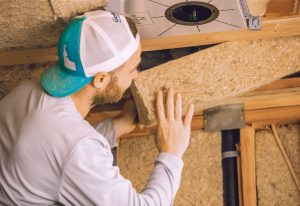
Hempitecture is bringing natural fibers, hemp in particular, to the forefront of sustainable building design.
By Rachael S. Davis, Executive Editor
Not every textile entrepreneur begins their journey in the textile space. Some arrive by way of a completely different path — driven by a problem they can’t ignore and a vision for change. For Matthew “Mattie” Mead, co-founder and CEO of Jerome, Idaho-based Hempitecture Inc., that moment came while studying architecture, environmental science, and entrepreneurship at Hobart College in Geneva, New York.
As Mead became immersed in the world of sustainable design and materials, “I saw a big problem,” Mead said. “Buildings and their operations are responsible for nearly 40 percent of our carbon footprint. In seeking to understand how to solve that issue, I became enamored with the idea of using plant-based, sustainable fibers.”
He was inspired to use hemp as a carbon-storing, high-performance material, and what started as a vision, quickly became Mead’s mission.
Leveraging Hemp
In 2013, Mead co-founded Hempitecture — a company he touts as a “Public Benefit Corporation with a mission to benefit both people and planet through carbon capturing mate-rials.” Mead works with Co-Founder and Chief Innovation Officer Tommy Gibbons to develop Hempitecture’s biobased construction materials.
The company primarily uses decorticated and cleaned industrial hemp fiber to create its products, along with some cotton and thermoplastic fibers including polyethylene and polyester biocomponent bonding fibers. Depending on the use case, the company may also create products using polylactic acid (PLA) fibers.
“Hemp is our cornerstone because it’s fast-growing, regenerative, and has ideal insulation properties,” Mead said. “We like to consider it our carbon capturing engine behind our product portfolio. We blend the hemp with other fibers, depending on the performance characteristics we are seeking to achieve.”
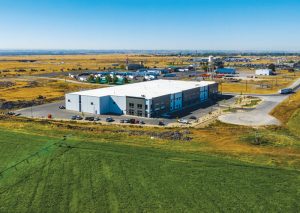
Jerome, Idaho, was selected for the company’s headquarters and manufacturing location because it’s in the heartland of agricultural industrial hemp fiber production, according to Mead. “From a logistical standpoint, it’s centrally located to where hemp is grown, but our factory is located right on Interstate 84, allowing efficient distribution of our finished nonwovens,” Mead shared. “In Idaho, we’ve found great team members, we’ve received support from the Idaho Department of Commerce, and we’re proud to sup-port this agricultural opportunity in Idaho, an agriculturally aligned state.
“Agriculture is at the heart of what we do,” Mead emphasized. “By sourcing fibers like hemp from American farmers, we’re creating new markets for regenerative crops. We’re turning farms into supply chains and putting rural communities at the center of climate solutions.”
Hempitecture also operates five distribution centers around the country.
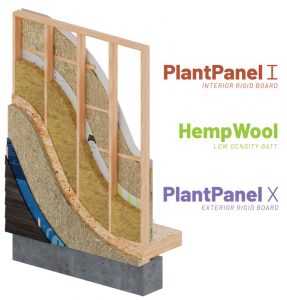
First Introduction: HempWool®
Hempitecture’s first innovation was HempWool®. This natural fiber batt insulation material contains hemp, but no wool as the name may suggest. The wool portion of the name arises from the fact that HempWool was designed to replace mineral wool and fiberglass products traditionally used in the construction business. HempWool comprises 90-percent hemp and 10-percent binder fiber.
“We initially collaborated with Europe-based OEMs and other manufacturers who had experience in natural fiber insulation and nonwovens,” Mead said. “That helped us under-stand the machinery and process requirements. With their support, we developed a unique configuration of nonwoven machinery with modifications so it can handle natural fibers like hemp, which behave differently than synthetic fibers.”
Eventually, Hempitecture brought the technology stateside and made it their own, modifying, improving, and ultimately scaling it into a domestic operation.
Hempitecture began development of HempWool in its production facility in 2022, and after working with academic and industry partners, launched the product for sale in the U.S. market.
HempWool currently is used primarily in residential construction, but Hempitecture is working on expanding its reach into other markets including industrial and commercial for wall, roof, and floor assemblies.
“Current capabilities include fiber opening and cleaning, fiber treatment, airlay and thermal bonding, and nonwoven cutting,” Mead shared. “We also can offer custom formulations for partners across industries and are always open to collaborating on nonwoven projects.”
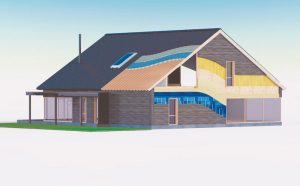
Whole Home Solutions
Once HempWool hit the market, Hempitecture looked for other areas where its natural fiber technology could make an impact. The company is building a portfolio of whole home thermal and acoustic insulation solutions, but is not limiting itself to building products.
“Manufacturing is about continuous improvement, and we continue to develop our manufacturing technologies and capabilities to advance our product portfolio,” Mead said. “While we started with HempWool, it’s an evolving product as we continue to advance our fiber compositions, our treatment technologies and our operational efficiency.”
PlantPanel™ — a continuous thermo-acoustic insulation panel made from biobased fibers for exterior or interior wall assemblies —and FiberFill™ — a blowable loose-fill insulation material ideal for retrofits and attics — became the next two products offered by Hempitecture. In addition, it offers a carpet underlay named FiberPad, and an eco-friendly building material called Hempcrete.
“We also entered the cold-chain packaging sector, developing a high-performing hemp-based liner for shipping food and pharmaceuticals,” Mead said. Hempitecture utilizes cotton shoddy fiber for the cold-chain packaging products, which helps divert landfill bound textiles into new materials.
“While hemp and building materials are our core focus, we also produce products for a variety of industries needing nonwoven materials using a range of different fibers,” Mead noted.
Hempitecture Advantage
According to Mead, Hempitecture’s products compete head-to-head on thermal performance. The company has completed ASTM C518 thermal testing, ASTM E84 testing and ISO-based lifecycle assessments to back up its claims. “From an R-value perspective, we’re competitive with mineral wool and fiberglass, but our product phase shift resistance is improved over these conventional products,” Mead noted. “Hemp fiber insulation has incredible phase shift resistance — storing heat and then releasing it as temperature shifts from hot to cool, reducing heating and cooling loads,” Mead said. “It’s also highly dimensionally stable so it won’t sag or slump over time.
“From an embodied carbon and health standpoint, we’re significantly better. We’re continually optimizing our products and we’re advancing our fire-resistance ratings to better align with commercial and industrial standards.”
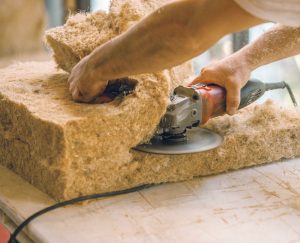
Mead notes however that there is a lot more to insulation than just R-value. In addition to making the grade on thermal performance, Hempitecture products offer other significant advantages. They are non-toxic, vapor open, carbon-storing and safe to touch. HempWool can be handled, cut and installed all without wearing gloves. Hemp also confers a natural mold- and pest-resistance.
Properties can be further enhanced with the company’s proprietary fiber fortification line that can increase fiber consistency, and improve flame and pest resistance. “We also
enhance our fibers with our fiber treatment technology, which is typically borate-based chemistries — a naturally occurring mineral with a long safety record,” Mead added.
In addition, Hempitecture products are landfill-safe and mostly biodegradable. “Unlike traditional insulation, which can persist for decades releasing harmful substances as it degrades, our materials break down safely,” Mead said. “Because our products are airlay thermal bonded, we do use small amounts of polymers, but are always monitoring the world of biobased bonding fibers.”
Wide-Scale Adoption
Response to Hempitecture products has been incredibly positive, especially among architects, builders and homeowners who prioritize health and sustainability. “The biggest hurdle is awareness, and people don’t always know that better alternatives exist,” Mead reflected. “We also face typical industry barriers like code compliance and cost competitiveness at scale.”
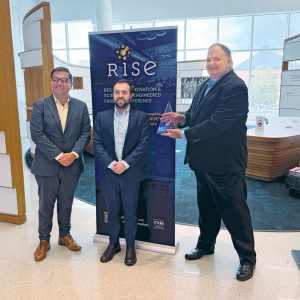
In 2024, Hempitecture’s Plant-Panel received the Association of the Nonwoven Fabrics Industry’s RISE® Innovation Award. Being recognized by the nonwovens industry helped raise awareness for Hempitecture. “Winning the RISE Innovation Award put us on the radar of some major players in the nonwoven and building material industries,” Mead said. “It validated our work and opened doors for collaboration, funding and visibility in sectors we hadn’t yet tapped. We are excited about the opportunity to collaborate with mainstream players in the nonwovens and textiles industries to help custom build nonwoven solutions using our technology and capacity.”
A Better Future
The Hempitecture team is small, but growing. The company is eyeing an expansion in Tennessee that would be enabled in part by Department of Energy funding.
Mead considers material innovation, sustainability leadership and the company’s supply chain as its biggest strengths. “We partner with companies who produce fibers to our specification, which gives us flexibility and resilience,” Mead said. “Our team also brings together architectural knowledge, manufacturing experience and startup experience, which is a rare combination.
“Our culture is mission-driven, entrepreneurial, and rooted in the belief that materials can be a force for good,” Mead offered. “We value transparency, sustainability, health and performance, as well as American manufacturing.”
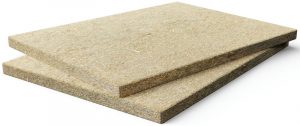
Long-term, Hempitecture envisions a world where natural fibers are a cornerstone of the built environment from walls to packaging and beyond. “We’re building a platform for biobased building materials,” Mead said. Our technology can be extended to new product categories including acoustic panels, molded composites and prefab building systems.”
Summing up, Mead said: “The materials we build with matter. They shape our health, our climate and our economy. I believe we have a responsibility, as well as a huge opportunity, to reimagine those materials for a better future.”
From an idea born in a college thesis to a growing company reshaping how buildings are made, Hempitecture has proven that natural fibers can compete with — and perhaps surpass — conventional materials. By pairing agricultural innovation with advanced manufacturing, the company is carving out new markets for regenerative crops while delivering healthier, more sustainable products for builders, homeowners, and industries beyond construction. As awareness grows and collaborations expand, Mead sees Hempitecture not just as a manufacturer, but as a catalyst for change — proof that the materials we choose can protect our planet, strengthen communities and inspire a better future.
2025 Quarterly Issue III




